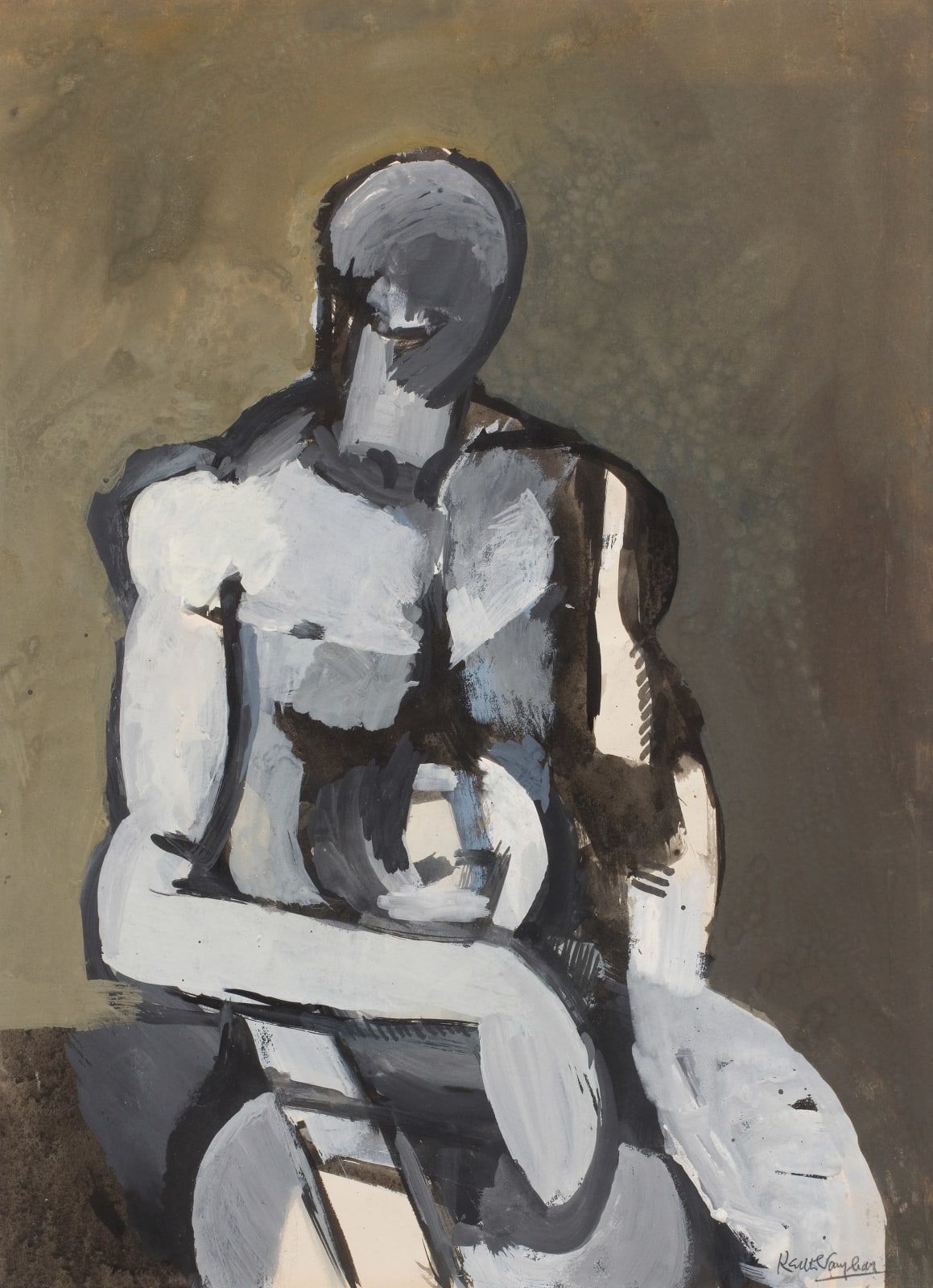Keith Vaughan
Grey Seated Figure, 1957
Gouache on paper
14 x 10 in / 35.5 x 25.5 cm
Signed 'Keith Vaughan' (lower right); inscribed and dated twice 'GREY
SEATED FIGURE/1957' (on the backboard)
SEATED FIGURE/1957' (on the backboard)
£ 28,000.00 + ARR
Vaughan created several seated figure paintings throughout the 1950s. In each, he focusses on a single male figure resting calmly on a chair, bench or table, painted with a palette...
Vaughan created several seated figure paintings throughout the 1950s. In each, he focusses on a single male figure resting calmly on a chair, bench or table, painted with a palette of soft blues, browns and greens. At a time when Vaughan was greatly inspired by Matisse and Picasso (having visited the Victoria and Albert’s dedicated exhibition several times over the mid-1940s) he began to present his figures in an increasingly abstracted manner. In Grey Seated Figure, Vaughan shows both the presence and the physicality of the sitter with a commanding and imposing strength, demonstrating his fondness and admiration of the male form. Compared to Vaughan’s private drawings however, the masking or concealment of male anatomy in his publicly exhibited works deliberately avoids allusion to Vaughan’s sexuality: something he was deeply troubled by throughout his lifetime and documented in his personal journals. Vaughan’s later works of the 1960s and 70s push the figure even further into abstraction as he removes almost all anatomical detail from his subjects, melding and merging their simplified block shapes into the backgrounds against which they are portrayed.
Provenance
A gift from the artist to Peter Adam (1929-2019) and by descent.2
of
2
